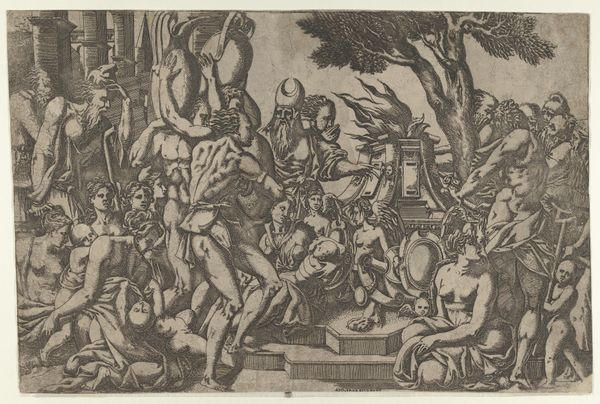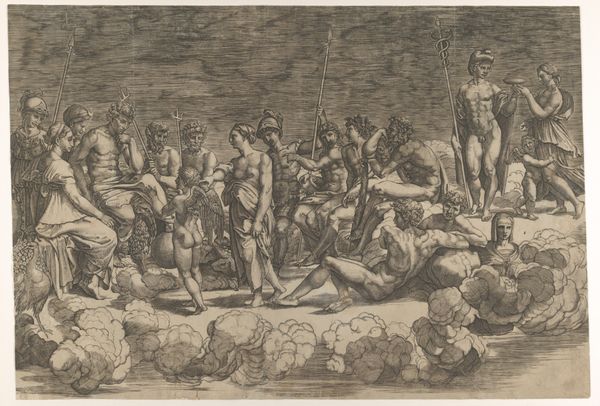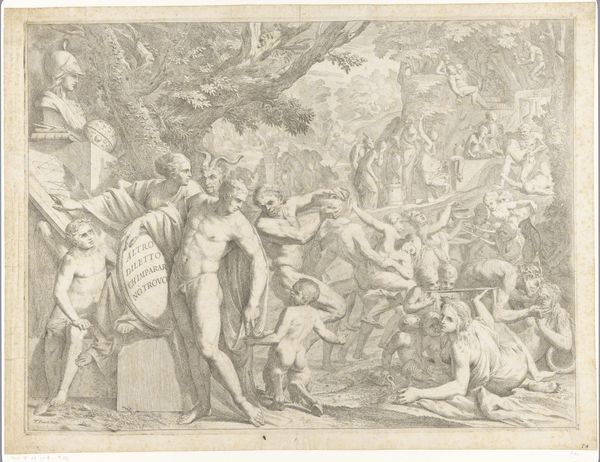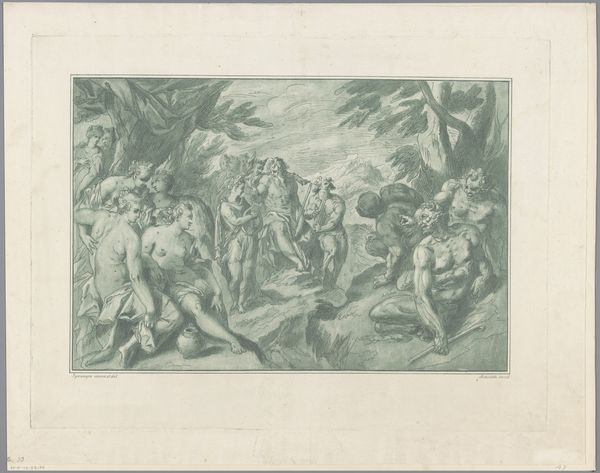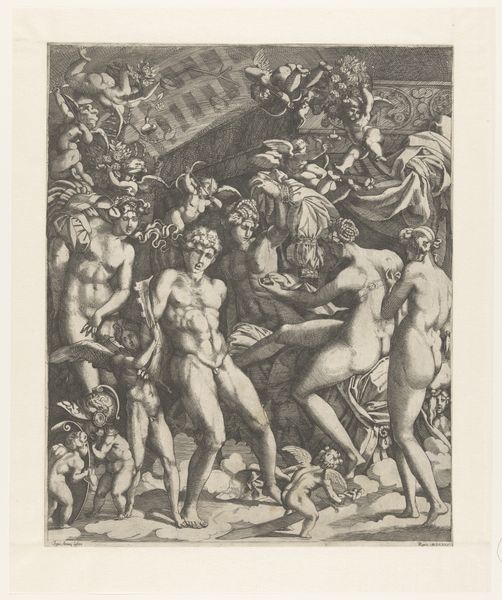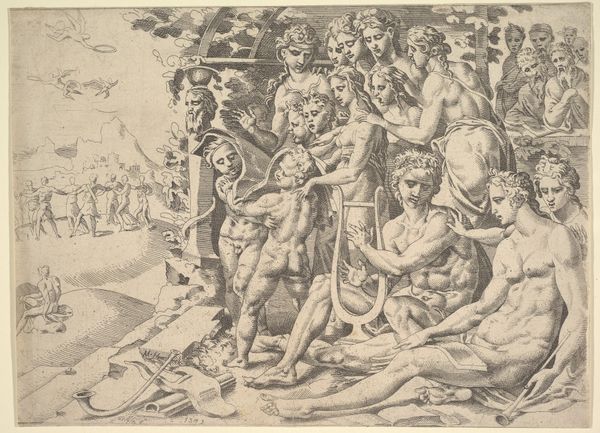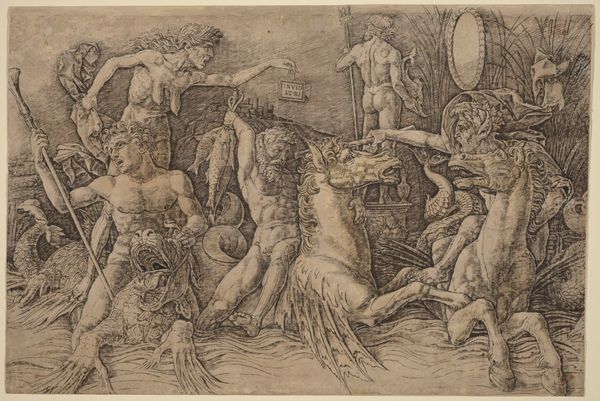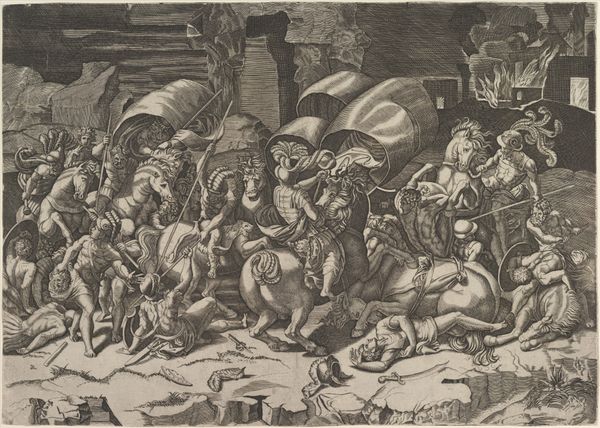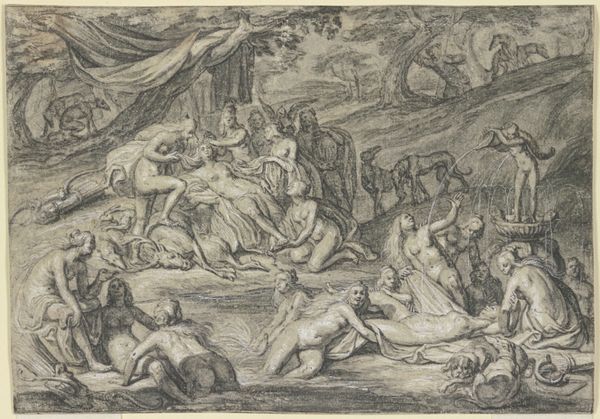
drawing, print, engraving
#
drawing
#
ink drawing
#
pen drawing
# print
#
pen sketch
#
mannerism
#
figuration
#
history-painting
#
nude
#
engraving
Dimensions: Sheet (trimmed): 10 7/8 × 16 7/8 in. (27.7 × 42.9 cm)
Copyright: Public Domain
Curator: What strikes me immediately about this print, entitled "Hercules dressed as a woman" by Antonio Fantuzzi, from around 1540-1545, is the level of detail he achieves with ink. The crosshatching is incredibly fine. Editor: Yes, it’s densely packed! But it also makes me feel uneasy. This portrayal, with Hercules in drag, evokes questions about the performance of masculinity, especially within patriarchal societies that so revere brute strength. Curator: The image depicts the episode where Hercules serves Queen Omphale as a punishment. He’s forced to do women's work, spinning wool, and wearing feminine attire. Theseus is also present on the right, though his connection is not clearly elaborated. Editor: Precisely! And that is where it gets more interesting. There's the humiliation of a hyper-masculine figure. Hercules, known for his incredible strength and heroic feats, is now subjugated, emasculated. It really underlines how even legendary strength bows to systems of power, often dictated by gender. Curator: I find it compelling that artists return again and again to classical tales. They can often serve as a visual shorthand for complex moral or philosophical concepts. Here, we see ideas about power and its performance played out through familiar archetypes, even extending to Hercules being watched, almost evaluated, by Theseus. Editor: Exactly. Consider, though, the perspective of gender non-conforming individuals viewing this centuries later. Is it playful, a bit of cheeky gender bending? Or is it reinforcing that drag is only suitable for punishment or comedic relief? It becomes loaded with layers of meaning across time. Curator: Indeed. This Mannerist print offers a moment where accepted societal roles are turned upside down, inviting us to reconsider symbols we think we understand and maybe to question those binaries. Editor: Agreed. And hopefully, it inspires us to ask who gets to write the myths in the first place and whose stories they center. Ultimately, art should open pathways for all identities.
Comments
No comments
Be the first to comment and join the conversation on the ultimate creative platform.

